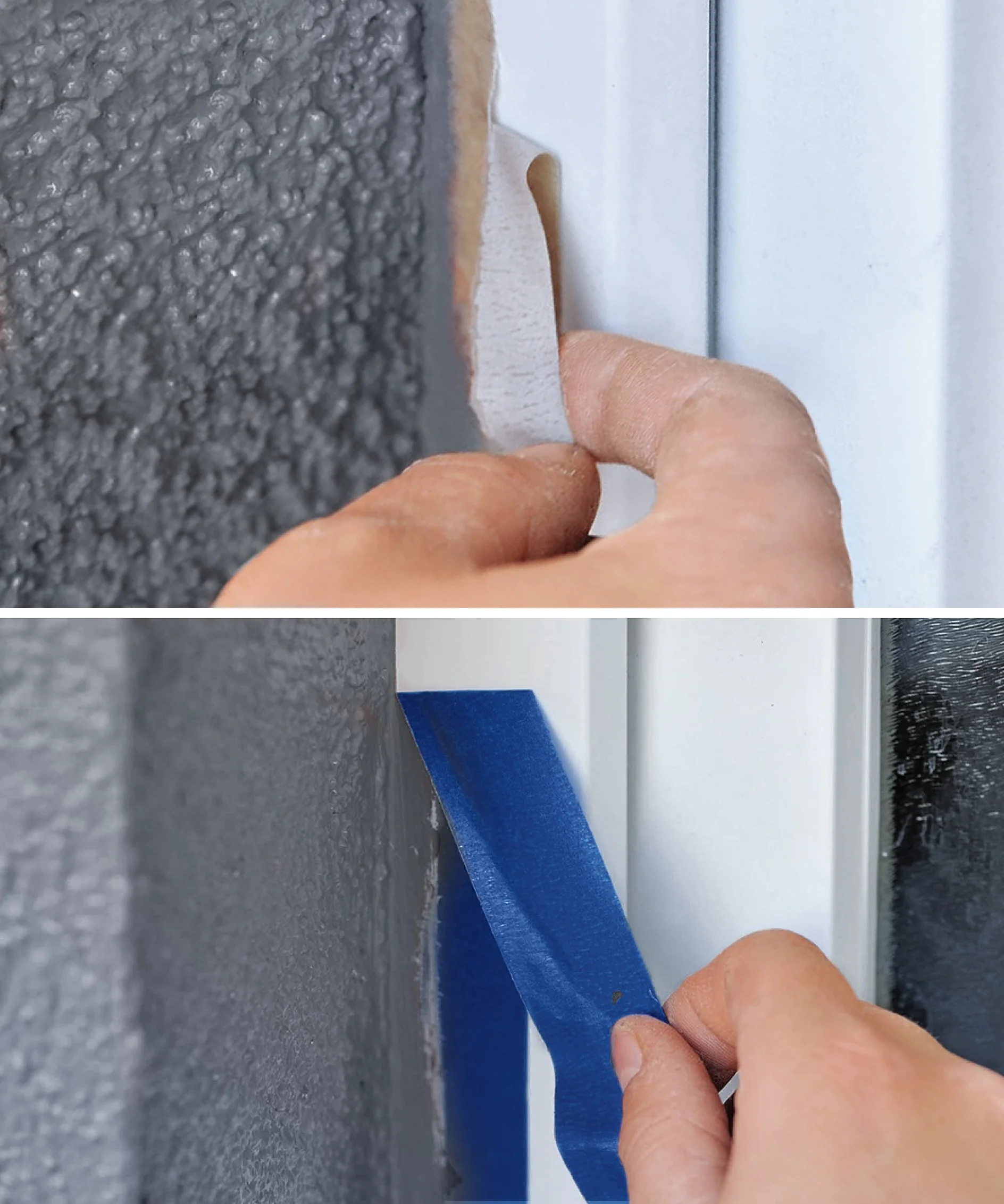Masking on Plastics and Anti-Adhesive Surfaces
When you have the right masking product, even dealing with a tricky surface can be a simple, pain-free process.

When you have the right masking product, even dealing with a tricky surface can be a simple, pain-free process.
A lot of the time there are good reasons for this, like when it comes to PVC windows. They’re cheaper than wood and aluminum, they’re easy to maintain, they’re recyclable and they last a fairly long time, too. But when it comes to masking them, you still need to take care.
That’s because old frames, particularly south-facing ones that take the full force of the sun, can age, developing a matt, dirty, or chalky surface that’s easily marked or damaged.

Masking on PVC Windows can be tricky when using the wrong tape.
As always, if you’re worried about marking or damaging a client’s delicate surfaces, make sure you carry out a tape test (in the client’s presence if possible) and that they’re aware of your concerns and what the risks are before you begin. With PVC windows, here are the three most common risks:
Many modern materials contain a variety of non-stick compounds – materials such as:
These are generally meant to make life easier as well as prettier because they’re dirt repellent and easy to clean. When it comes to masking, however, they can make life tricky.
We haven’t found a universally applicable solution to this (yet!) but until we do there are a few tesa products that may stop you coming unstuck: (As always, it’s best to be on the safe side and do a tape test before you get to work.)
It sounds obvious, but whenever you’re confronted with a non-stick surface (and a texture-effect coating in particular, as adhesives can affect these the most), don’t forget to investigate whether masking off the whole area is an option.